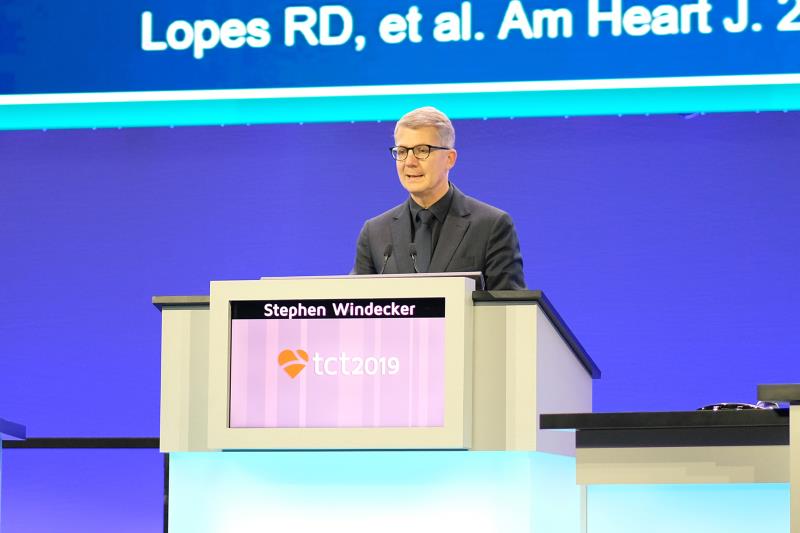 Dr Stephan Windecker
Dr Stephan WindeckerIn patients with high-bleeding risk, undergoing PCI* with a polymer-based drug-eluting stent (DES) was noninferior to a polymer-free drug-coated stent (DCS) when followed by a 1-month dual antiplatelet therapy (DAPT), according to the Onyx ONE** trial presented at TCT 2019.
While current guidelines recommend 3–6 months of DAPT for patients with high-bleeding risk undergoing PCI, DAPT duration as short as 1 month is also suggested for selected patients.
There have been no data comparing polymer-based DES vs polymer-free DCS followed by 1-month DAPT treatment in high-bleeding risk patients, despite these patients making up to 40 percent of those undergoing PCI, noted Dr Stephan Windecker of the Swiss Cardiovascular Center in Bern, Switzerland.
“The Onyx ONE … trial is the first study to evaluate outcomes between a polymer-based DES and a polymer-free DCS with 1-month DAPT after PCI in a complex patient population,” said Windecker.
At 1 year, the primary composite endpoint of myocardial infarction (MI), cardiac death, or definite/probable stent thrombosis occurred at similar rates in the polymer-based Resolute Onyx DES compared with the polymer-free BioFreedom DCS (17.1 percent vs 16.9 percent; hazard ratio [HR], 1.02; risk difference, 0.2 percent) — meeting the criteria for noninferiority (p-value for noninferiority=0.011). [TCT 2019, LBT session 1]
The secondary endpoint of target lesion failure (TLF)*** was also similar between the two groups at 1 year (18.0 percent vs 17.9 percent; p=0.84). Events were driven mainly by target-vessel MI, which occurred at comparable rates of 12.8 percent in the Resolute Onyx group and 14.0 percent in the BioFreedom group (p=0.43); but turned out to be significantly lower with Resolute Onyx in a 1-month landmark analysis (3.7 percent vs 5.9 percent; p=0.02).
There were also no significant differences in BARC# bleeding rates between the two groups at 1 year.
“[The study shows that] among high bleeding-risk patients treated with 1-month DAPT after PCI, Resolute Onyx was as safe and effective as BioFreedom … and provides important evidence to inform clinical decision-making for [these] patients,” said Windecker.
In the prospective, global, multicentre trial, 2,000 patients with high-bleeding risk were randomized 1:1 to receive the polymer-based Resolute Onyx DES or the polymer-free BioFreedom DCS.
The better angiographic outcomes with the polymer-based DES led to a greater device success post-PCI (92.8 percent vs 89.7 percent; p=0.007) compared with the polymer-free DCS.
Questions answered?
Polymer-free stents were initially developed based on the belief that the risk of stent thrombosis might be lowered without the polymer — hence, allowing for a shorter DAPT regimen post-PCI.
However, Windecker acknowledged that the lack of a longer-duration DAPT (3- or 6-month) control arm constitute a study limitation, in addition to the single-blinded design of the trial and insufficient power to detect differences in low-frequency secondary endpoints.
As such, the study does not really address the question of whether 1-month DAPT is the way to go in contemporary practice, said invited discussant Dr Philip Urban from the Hôpital de la Tour in Geneva, Switzerland.
“The answers are clear. We now have two very good stents,” he said on one hand, adding on the other hand that “if we thought 1 month of DAPT is an appropriate choice, then either one is a good choice.”
When questioned on the higher MI rate in Onyx ONE compared with historical data from the similar LEADERS-FREE trial, Windecker explained that this may be due to the more rigorous methodology used to ascertain MI (leading to higher detection rates) in the current trial.